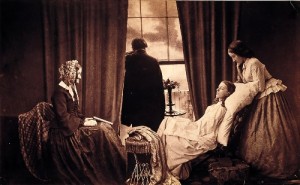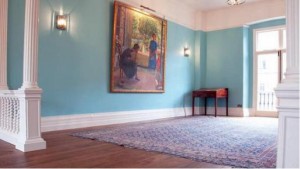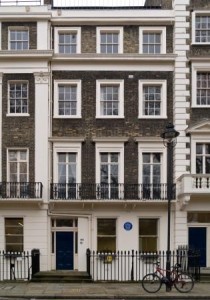One of my aims with this blog is to tell you a little more about members of staff in the department – about their research interests and their various activities and publications. This week, I’m going to stay close to home, and say something about the colleague who has the office next door to mine – Suzannah Biernoff. Suzannah joined us in the department in 2007, and she works broadly in the field of visual culture, histories of the body and emotion. She’s a rare scholar in having published on vastly divergent periods – both medieval and contemporary visual culture! Some of her most recent work has explored powerful, often distressing issues around facial disfigurement and representation in the First World War.
Suzannah is currently working with Fiona Johnstone on an important project funded by the Wellcome Trust, called Visualising Illness. This is bringing researchers together with artists and clinicians, and they have organised an exciting event for 14th November. Professor Joanna Bourke will give a lecture on ‘Pain and the Art of Amputation’, followed by a panel discussion. You can find out more – as well as explore the project’s mesmerising picture gallery (from which I have stolen the below) – on their webpages.
* * * * *
Fiona recently submitted her PhD on ‘Challenging Portraiture: AIDS, self-representation and the death of the artist’, supervised by Suzannah, but she has managed to find time, alongside her doctoral work and many other activities, to be a key member of the Student Members Committee of the Association of Art Historians. She has co-organised this year’s AAH New Voices conference, ‘A Picture of Health’, along with another of our PhD students, Nicola McCartney, sponsored by Birkbeck and the Wellcome. ‘New Voices’ will take place on Friday 7th November, and will include an evening wine reception with a keynote address from the artist Christine Borland.
Fiona also kindly came along to the BA History of Art Induction evening a few weeks ago to give a talk about this important organisation, which brings together all art historians, whether studying the subject or working in schools, universities or museums/ galleries. It’s well worth considering joining the AAH, to get access to a wealth of news and information, events and publications. I also highly recommend the ‘Careers in Art History’ book they’ve produced – you can either buy it hard copy, or pay to download it from their website, and it’s packed with useful advice.
As part of her presentation to the new first year undergraduates, Fiona spoke about a number of funding opportunities open to members of the AAH – which are so attractive, I wanted to share a couple of them more broadly with you all.
* The AAH Internship Award offers funding to UK-based undergraduate and postgraduate students on part-time or full-time placements or internships within the UK. There are two awards of up to £2,000 towards placement-related expenses such as accommodation, travel and food.
* The AAH also runs the John Fleming Travel Award, offered annually by Laurence King Publishing, in memory of the art historian John Fleming. The aim of this award, £2,000, is to enable students to travel as a means of assisting or furthering their research. The award looks to encourage a better understanding of the arts from around the world.
. . Category: Uncategorized



